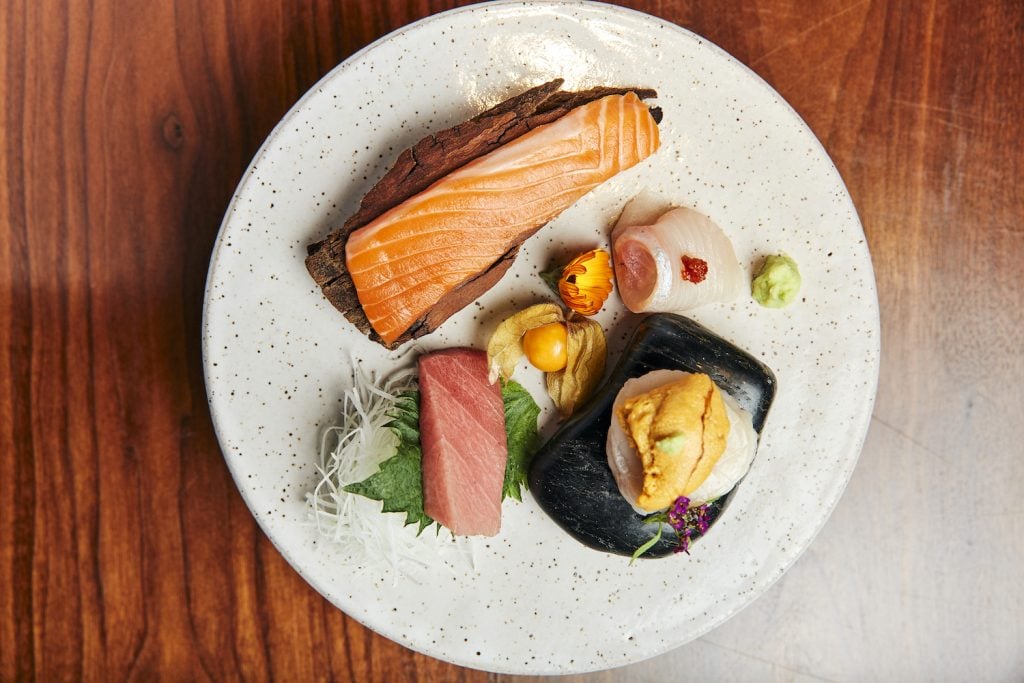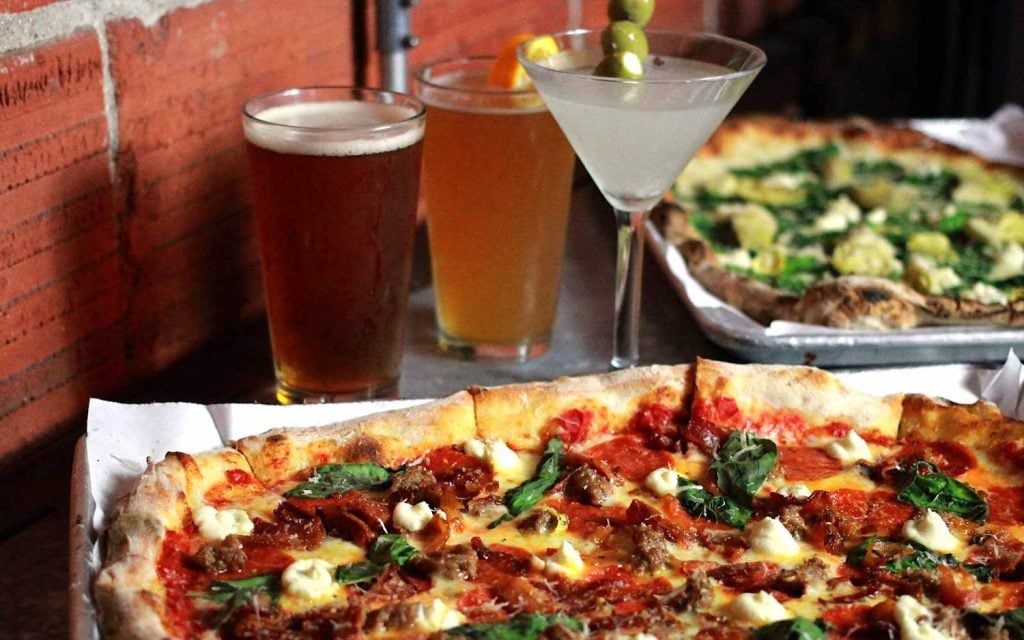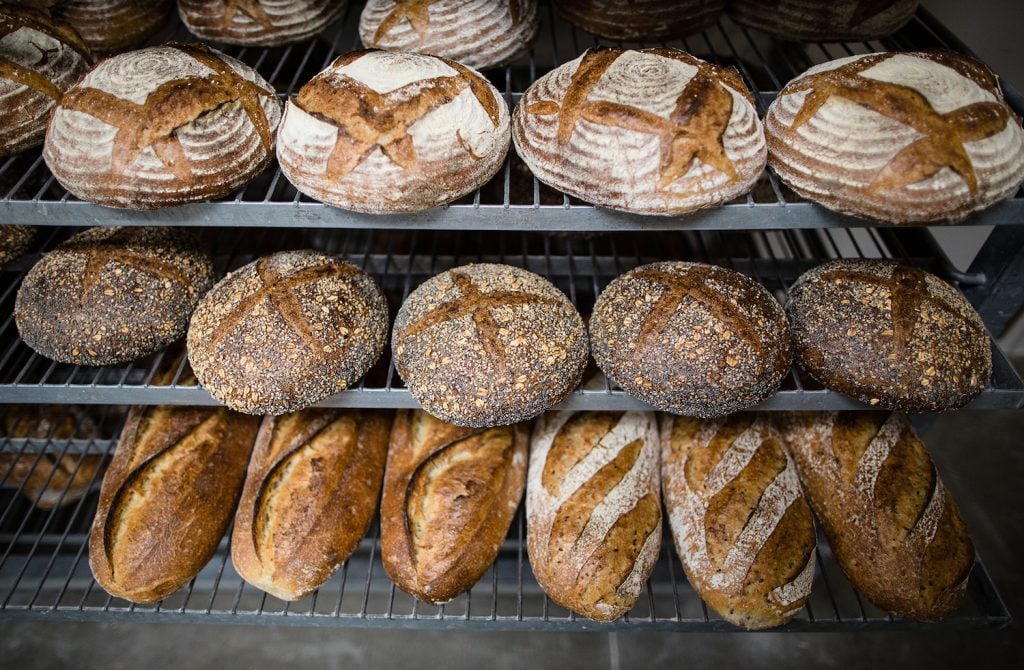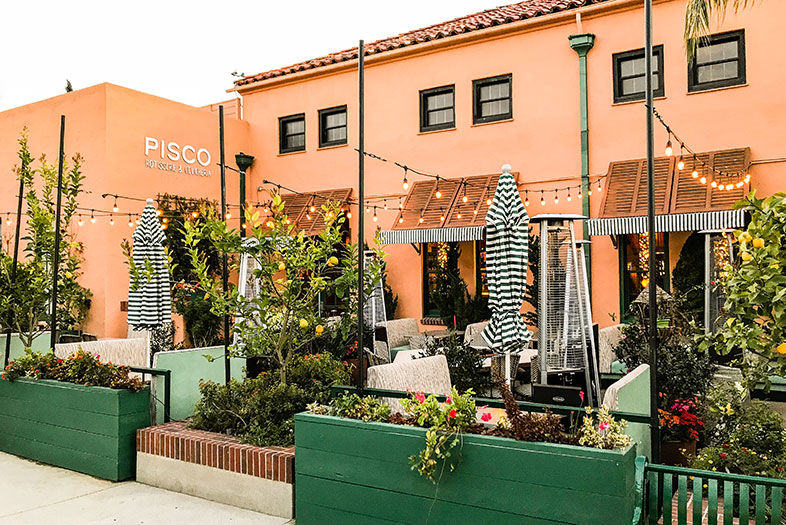Pisco Rotisserie & Cevicheria
5970 Avenida Encinas, Carlsbad; 2401 Truxtun Road, Liberty Station
BEST DISHES
Grilled octopus causita
Ají de gallina
Plantano
Each time it comes out of the kitchen, heads turn. Most diners stare, confused by the light-green monstrosity. Then they realize what the ridiculousness is. All but who are dead inside release a smile. It’s a huge cloud of green apple cotton candy. It’s not served on a paper cone. It’s on a formal dinner plate. It’s the equivalent of using a Microplane to shave a Jolly Rancher over tiramisu.
Pisco Rotisserie & Cevicheria is a Peruvian restaurant. Cotton candy is not a Peruvian specialty. But Peru has never met a foreign cuisine it was afraid to play with. When Chinese immigrants arrived in the late 19th century, Peruvians adopted their stir-fry method to create the famed dish lomo saltado. The Spanish brought beef to the country. Japanese migrant workers helped fuel the rise of ceviche and tiraditos.
And now one of the country’s better-known chefs opened his restaurant in the family-packed Liberty Station, and he’s adopted the pastel spun sugar loved by his pint-size clientele. (He also recently debuted a second location in Carlsbad.) Okay, so maybe comparing the effect of imperialism and cultural diaspora on a country’s cuisine to American kids’ love of cotton candy is a stretch. But it shows why Peruvian food became one of the stars of South America: Fusion set them free.
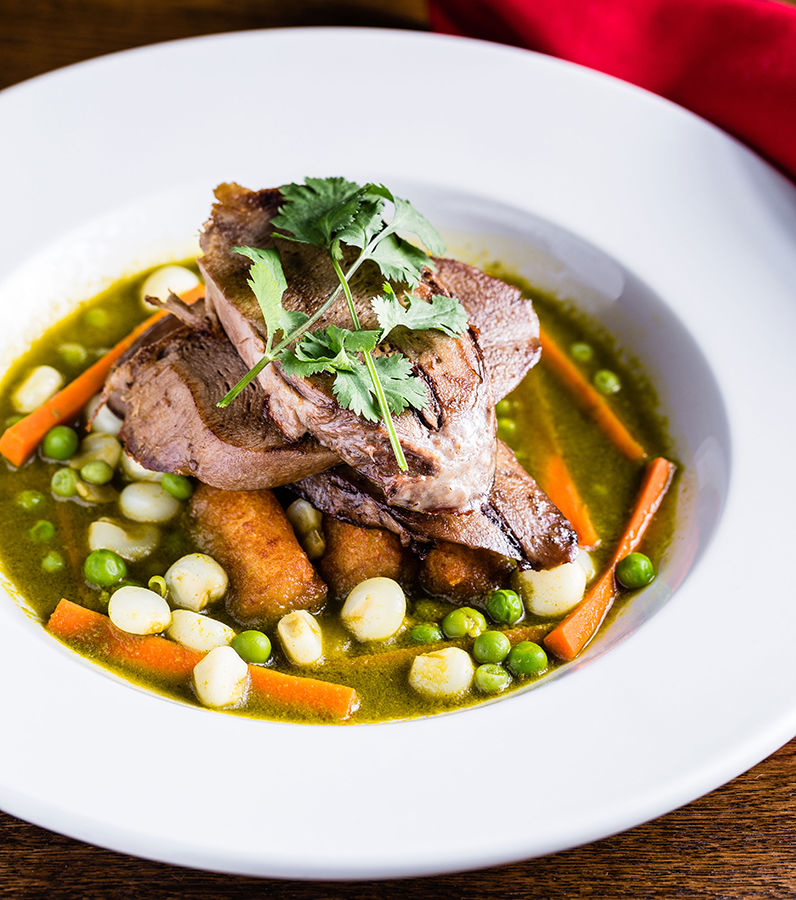
Pisco Rotisserie & Cevicheria Brings Fusion Flavors to San Diego
Lengua made of grilled beef tongue, carrots, peas, Peruvian corn, yucca, and huacatay broth
Another thing that made Peru a haven for food is its immense topography. Fifteen hundred miles of coastline means a world-class seafood supply. On land, the country rises and falls dramatically—and the various elevations create an endless supply of microclimates, all of which grow something different. There are three ingredients, especially, that define Peruvian cuisine: raw seafood (ceviches), potatoes (they have nearly 4,000 varieties), and ají peppers (which are to Peru what jalapeños are to Mexico).
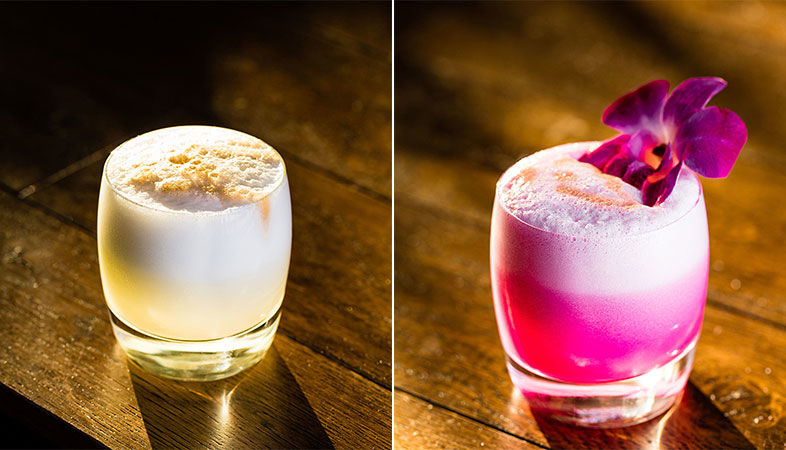
Pisco Rotisserie & Cevicheria Brings Fusion Flavors to San Diego
Pisco Sour Classico with lime juice, simple syrup, egg white, and Chuncho bitters, and Prickly Pear Pisco Sour—the same ingredients plus a prickly pear purée
Pisco is a collaboration between one of San Diego’s veteran restaurateurs, Sami Ladeki (Sammy’s Woodfired Pizza), and chef Emmanuel Piqueras. Piqueras has quite the pedigree. He attended culinary school in Lima before working two years in San Sebastián, Spain, at the iconic restaurant Arzak. He then made the rounds at some of America’s top Peruvian kitchens, including Limon Rotisserie in San Francisco and Andina in Portland. He hosts the Peruvian cooking show Sabor & Fusion on one of Latin America’s biggest cable networks.
Much like Indian food is known for tandoori, the Peruvian specialty that’s made the biggest inroads in American culture is the long-marinated fire-roasted chicken. And so Piqueras has smartly made that a fixture of his menu. Comfort breeds dinner reservations. Pisco’s bird is marinated for 48 hours and roasted until its skin is caramel-crisp with blackened streaks and swaths and stitching. The sauces are the real highlight, especially the ají amarillo mustard. Ají amarillo is Peru’s famous sauce—the spicy yellow pepper blended and sweetened with evaporated milk, enriched with cream, and given a nice acidic jolt from the mustard. Their chimichurri is sharper, thinner, and works best with the fattier, darker cuts of meat.
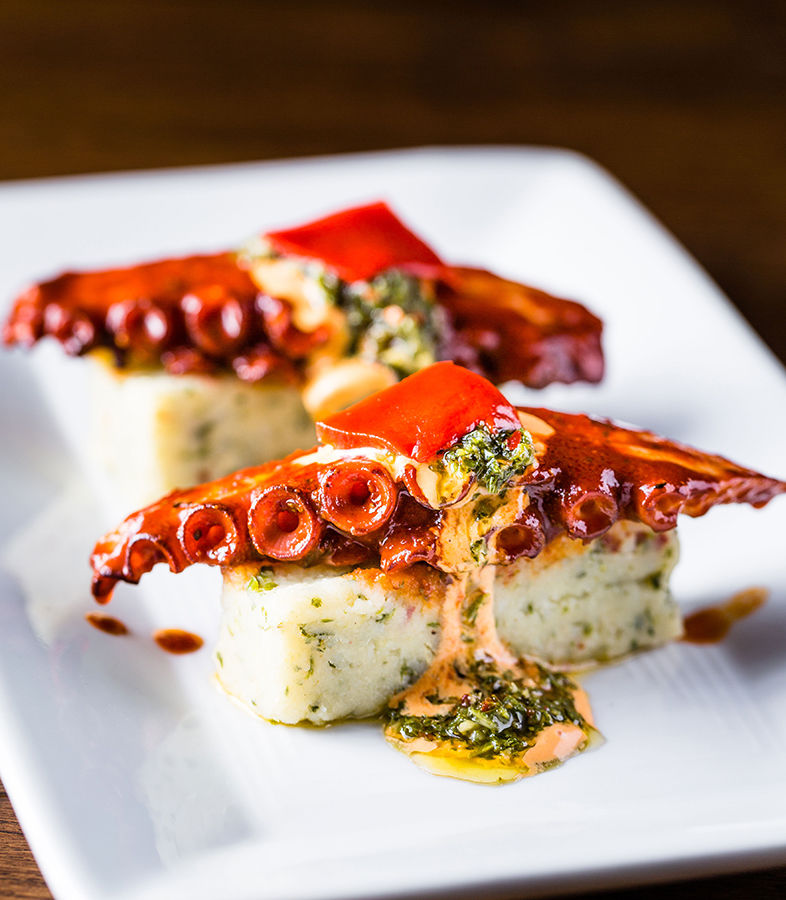
Pisco Rotisserie & Cevicheria Brings Fusion Flavors to San Diego
Grilled octopus causita with potatoes, chimichurri, and piquillo peppers
At the bar is a collection of drinks showing off the other native specialty, pisco—a spirit made of unadulterated grape juice. Essentially, they make wine, then distill it into a spirit. And everything we try with it is well-balanced, from the Pisco Sour (fresh lime, simple syrup, egg white, Chuncho bitters) and sweeter Pisco Punch (pineapple juice and liqueur, lemon juice, simple syrup) to the spa-water-esque Lado Este (fresh lime, cucumber, mint, simple syrup, and soda). You can order a flight of pisco to sip straight if you’d like to get really familiar.
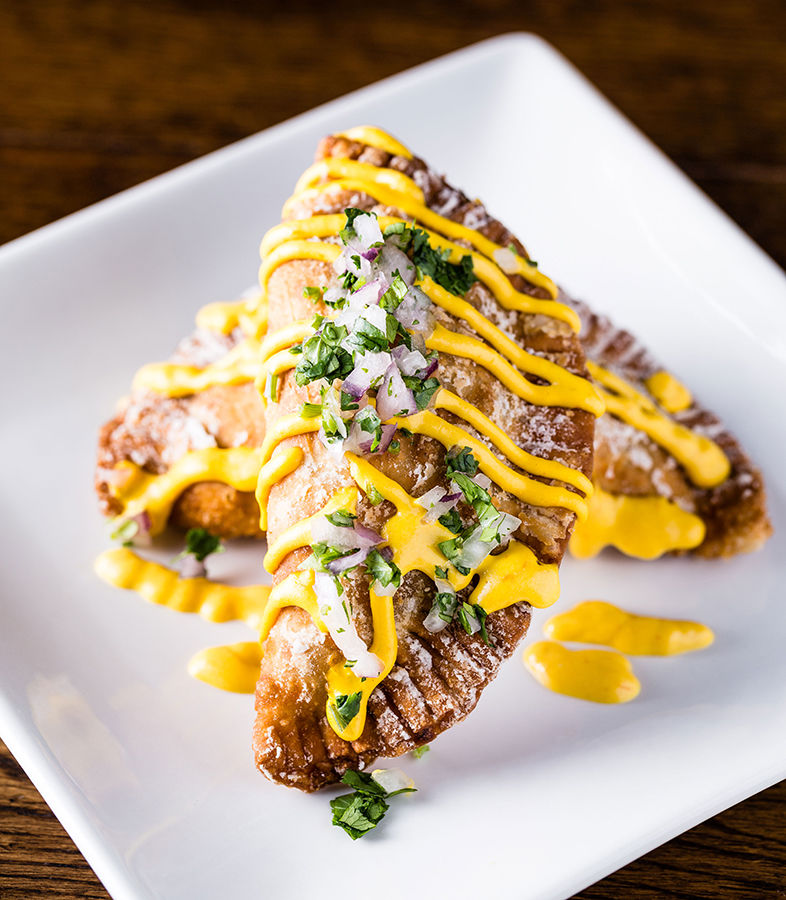
Pisco Rotisserie & Cevicheria Brings Fusion Flavors to San Diego
Beef empanadas with red onions, mozzarella, and huancaína sauce
From the ceviche, we try both the Martini de Tigre, which comes in a martini glass with calamari, shrimp, white fish, bay scallops, octopus, and then—the famed marinade—leche de tigre (tiger’s milk), which is usually a base of lime juice with sliced onion, chiles, salt, pepper, and whatever secret ingredients the chef wants to add to personalize it. The lime juice partially cooks the raw fish (or, more correctly, “cures” it), and ours needs a tad more of that electricity to give ceviche its trademark rough, acid-washed exterior and just-past-sashimi interior.
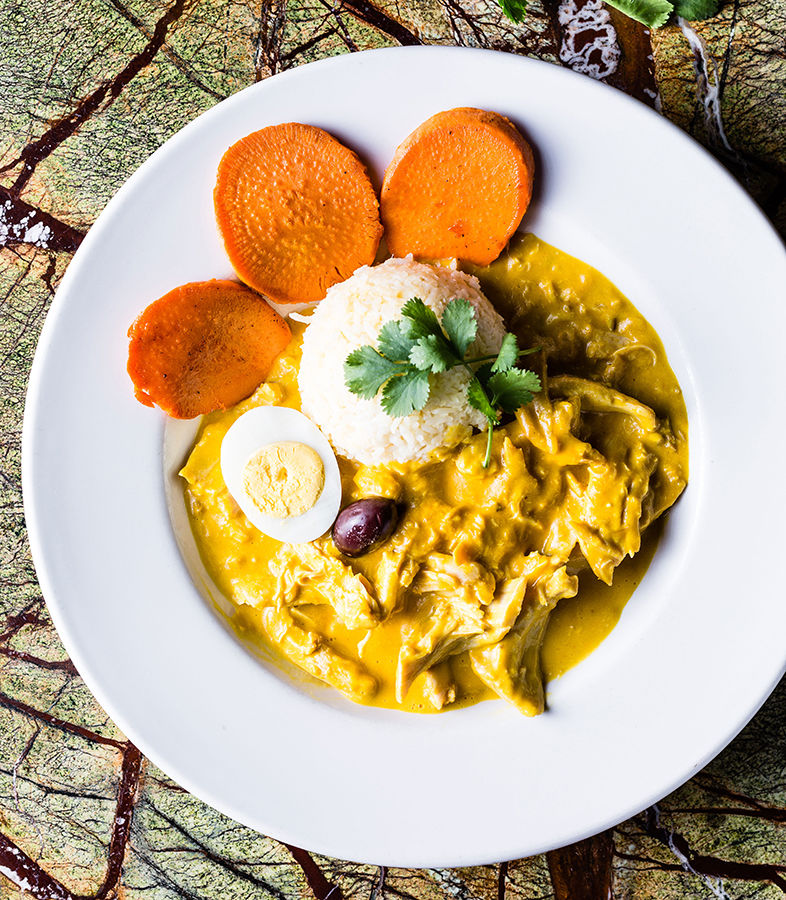
Pisco Rotisserie & Cevicheria Brings Fusion Flavors to San Diego
Ají de gallina made of pulled chicken, garlic rice, and yams plus huancaína sauce
Peruvian food without potatoes is like Ireland without them. And Pisco has a whole section dedicated to the causitas—cold mashed potatoes flavored with herbs and spices. For the chicken causita, the potatoes are flavored with chimichurri, so they have that herbal lightning, along with huacatay (black mint) sauce, red onion, lime, and cherry tomatoes. It’s plated cautiously. One element in this corner, another element in that. If you corral all the elements, it’s excellent. But miss one and it falls flat. So, gather. The grilled octopus causita, however, is just about perfect, the octopus rubbed in paprika and other spices it loves, over chimichurri potatoes and piquillo peppers. The octopus is flavorful, tender, inspired.
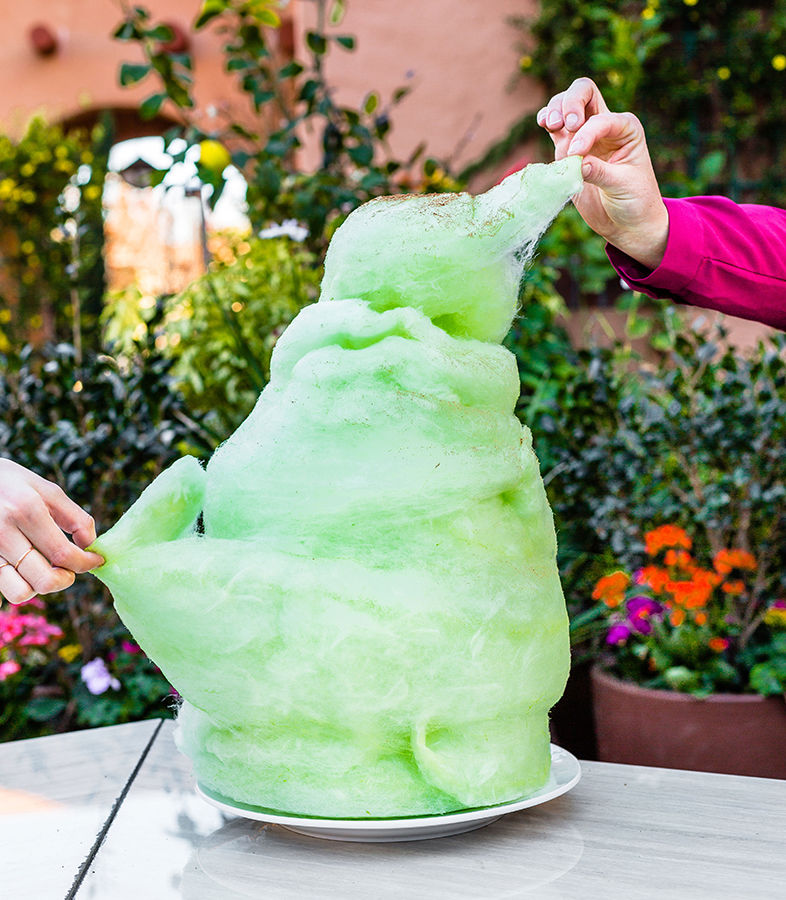
Pisco Rotisserie & Cevicheria Brings Fusion Flavors to San Diego
Green apple cotton candy
From the small plates, I’d stick to the empanadas, the famed pockets of fried dough holding stewed meats and veggies. Again, you have to gather all the elements scattered about on the plate, but when you do—especially the chicken stuffed with raisins, red onions, queso fresco, and huacatay sauce—it’s rewarding and complete.
The spicy corn needs to go to a Mexican restaurant and take a few notes. The butter is present, but the Tajín (spicy salt) is in short supply, as is the Romano cheese. It’s more of “a bit of spicy corn in a sea of buttered corn.”
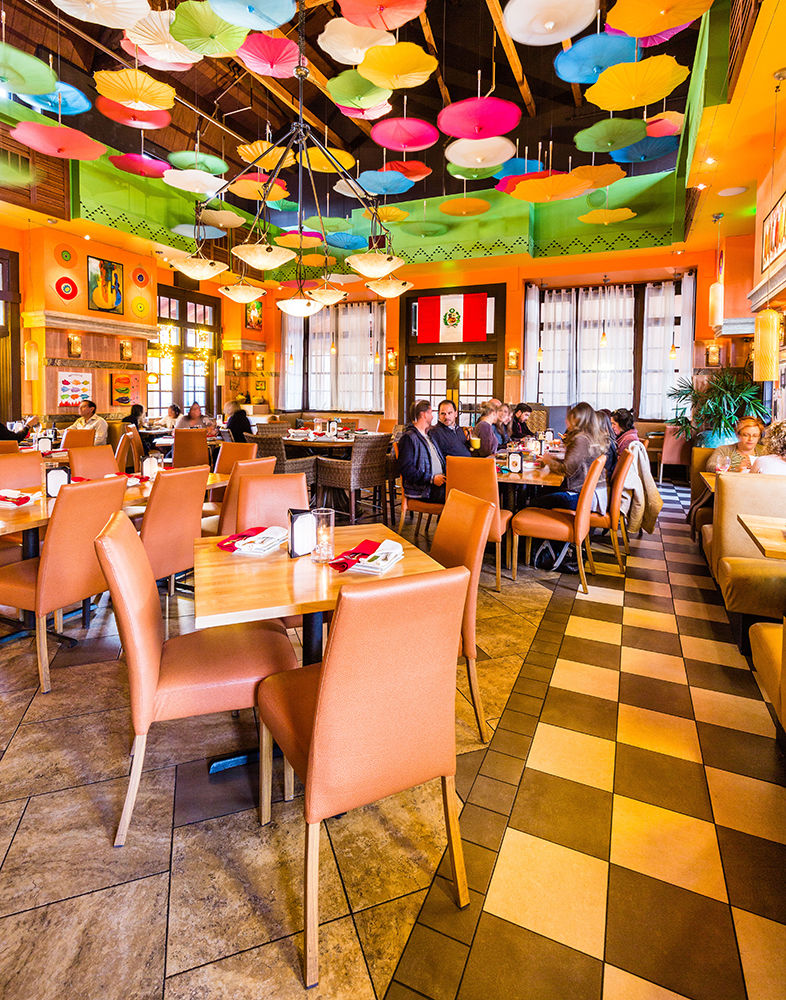
Pisco Rotisserie & Cevicheria Brings Fusion Flavors to San Diego
Justin McChesney-Wachs
The stars of the large plates are the ají de gallina—the famed creamy, sweet, spicy dish with pulled chicken over garlic rice with huancaína sauce. For reference, consider it a spicy, creamier corn chowder that’s far more interesting and flavorful. The slow-cooked lengua (beef tongue) is also very good. Peruvians are scared of no part of the cow, as evidenced by their national street food, anticuchos (beef heart on a stick). And the lengua has so many connective tissues that, when done right as it is here, it’s moist and delicious.
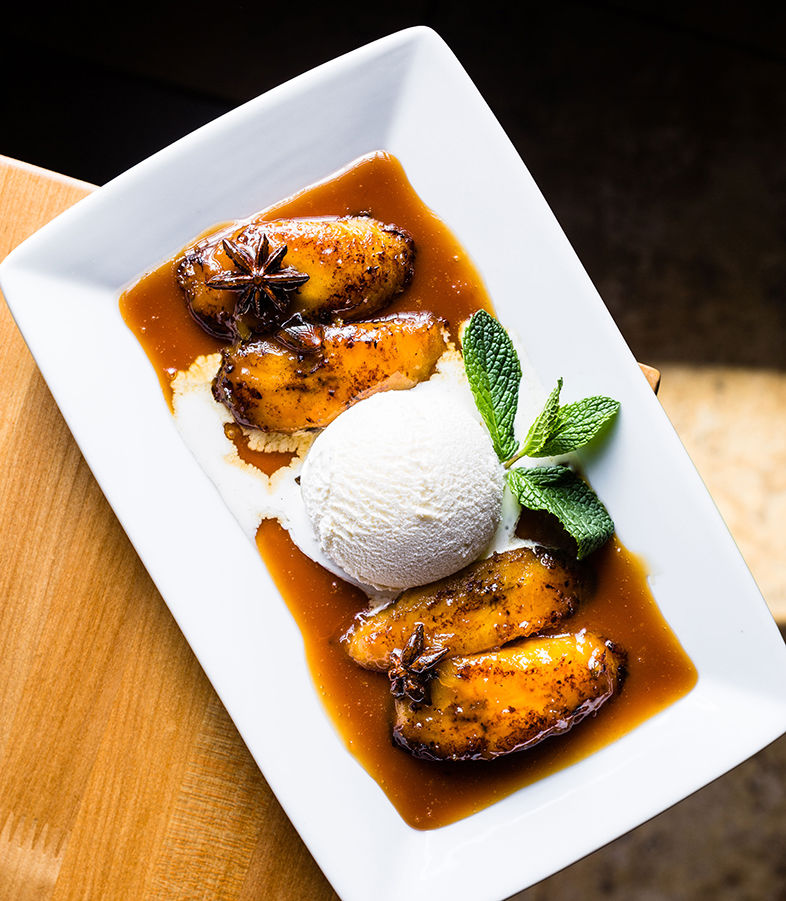
Pisco Rotisserie & Cevicheria Brings Fusion Flavors to San Diego
Plantano served with caramelized star anise and vanilla ice cream
Surprisingly, we can’t say the same about the lomo saltado, which is a tad tough, possibly overcooked in the wok. The peppers are the opposite, needing more time in marinade and/or the hot, saucy pan.
For dessert, the sliced plantains with caramelized star anise is one of the better desserts I’ve encountered in San Diego. The plantains have been sweetened so that they eat like bananas, with star anise’s trademark licorice, but not too much. It’s like a Peruvian bananas foster. And then, of course, there is that green apple cotton candy—ridiculous, delicious, odd. It’s a must to order for anyone under 10 at your table—or just for anyone.
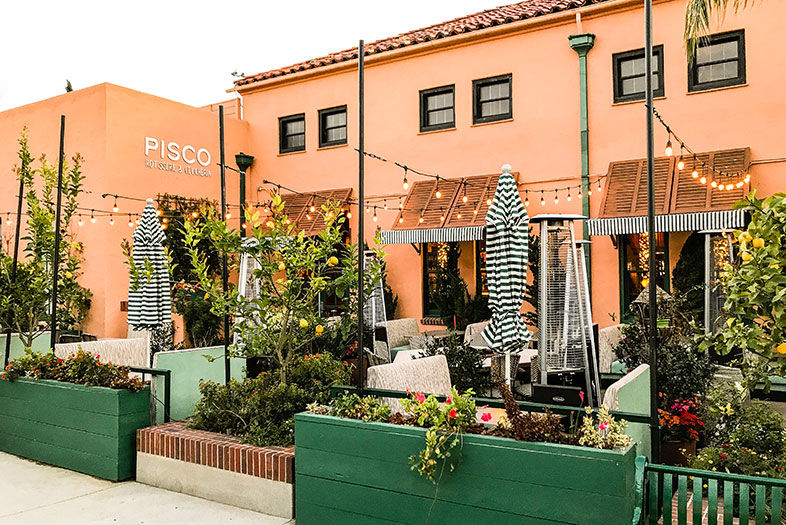
Pisco Rotisserie & Cevicheria Brings Fusion Flavors to San Diego
Pisco’s Liberty Station location

